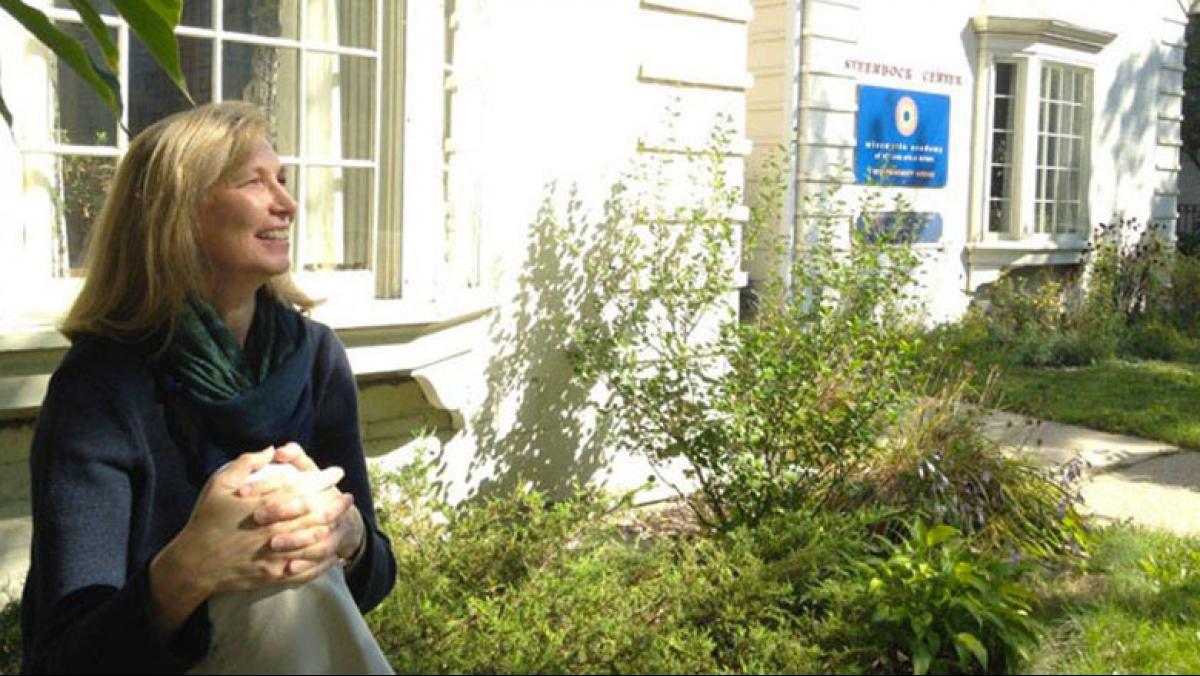At the beginning of a recent retreat for our staff and board of directors, I asked everyone to describe their favorite place in Wisconsin. Responses were largely what you would expect: a beloved family farm that went back for generations, a treasured backyard garden, fields and woods steeped in childhood memories, and, of course, the familiar family lake cabin “Up North.”
My choice was Julian Bay on Stockton Island in the Apostle Islands National Lakeshore. A few others mentioned enchanted natural areas like the great confluence of the Wisconsin and Mississippi Rivers at Wyalusing or the perfect place for bay side sunset viewing in Door County. There were even two votes for that magical combination of forest and stage that is American Players Theatre in Spring Green.
The conversation was a great way for our directors and staff to better get to know each other, and it set a collegial tone for the retreat discussions that followed. But—and I only realized this a bit later—the conversation also affirmed for the group just how much the natural places we know and love define so much of what Wisconsin means to us all.
Whatever our connection to Wisconsin might be, for most of us that connection was formed through a relationship with the landscape. It means that we care, either directly or abstractly, about the wellbeing of that landscape. In doing so, we become part of the memory of that landscape—and part of its future.
The Wisconsin Academy is all about connecting people and ideas. And part of what shapes our ideas—indeed, what makes us human—is grounded in place. The celebrated writer and environmentalist Wendell Berry once said that, “If you don’t know where you are, you don’t know who you are.” I think that his observation could easily have come from seeing the relationship we have with our lands, waters, cities, towns, and everything in between here in Wisconsin. We’re not just an amalgamation of addresses and zip codes. The places of Wisconsin that we hold dear help inspire and motivate us to sustain them, safeguard them, and make them better for those that follow.
Earlier this year one of our Waters of Wisconsin Initiative working groups was challenged to visualize a place or experience that meant “water” in Wisconsin. The words and stories that emerged from this group of researchers and conservationists were rich with memory and meaning. There were comments about the sense of space that water provides, the flat expanses of lake ice, seemingly endless horizons, and sunlight dancing across a lake. Others talked about water being a place where we gather and connect—on beaches with friends and families, with an uncle in the fishing boat, in a canoe with a paddling buddy, in a trout stream with other anglers, or with herons, frogs, fish, and other inhabitants. The groups noted that water was also a place for escape, contemplation, solace, and renewal. One person described water as a place to be “away” but still connected. We are, after all, constructed mostly of water.
While our prompt was for visual images about water, other sensory experiences wove their way into our observations. The “zing and plop” of a well-cast fishing line and lure hitting the surface evoked countless summer memories for me. Someone else noted the background buzz of powerboats on lakes. We articulated various voices of water—from the slap of waves on a boat at the dock, to the babble of brooks and springs, to the way sound carries over water, to the silence at dusk and the hum of summer insects in the moist air. We talked about the smell of wet sand (and wet dogs), fresh snow, thawing soil in the spring, and the delight of rolling in sand as a kid (followed by co-mingled smell and grit of silica and Coppertone). Water also holds mystery and another world under its surface—spawning beds, shafts of light penetrating to lake and riverbeds or into dark unknown depths, the experience of swimming underwater and being submerged and suspended at the same time.
I invite you to try this exercise with a group of friends or colleagues. I expect you’ll discover a tapestry of images that speaks to you in profound ways, too.
While water is one defining aspect of Wisconsin, our state is distinct from any other part of the world in many other ways. Teasing out the attributes and experiences that make Wisconsin unique is part of what helps us understand why we value it so much—and what we need to do to safeguard places and experiences that are the essence of Wisconsin to us, some of which might seem commonplace, but are increasingly rare in a rapidly changing world.
From its origins in 1870, the Academy has sought to explore, understand and share the lessons Wisconsin has to teach us through scientific investigation, artistic expression, and the observations of great writers. It all started with a fascination for the place we know as Wisconsin, which is still today—yes—a wellspring of imagination.
This summer, I hope you can connect with a place or experience that is quintessentially “Wisconsin” and consider how that has enriched your life, your language, and your view of the world. Drop us a line if you want to talk. We’ll be listening.




